Innovative Chemical Materials: Paving the Way for Sustainable Textile Printing
- Addtime: 2025-04-08 / View: 527
The global textile printing industry is undergoing a profound transformation, driven by the urgent need for sustainability and the relentless pursuit of innovation. Traditional practices, which have long relied on resource-intensive processes and petroleum-based chemicals, are giving way to eco-friendly alternatives. This shift is not merely a response to environmental concerns but also a strategic move to meet consumer demand for greener products and to ensure the long-term viability of the industry. This article explores the latest advancements in chemical materials that are reshaping the textile printing landscape, offering solutions that are both environmentally responsible and commercially viable.
● The Environmental Imperative: Why Change Is Essential
The textile industry is one of the largest polluters globally, contributing significantly to water contamination, carbon emissions, and microplastic pollution. According to the United Nations Environment Programme, the sector accounts for 20% of global industrial water pollution and 10% of global carbon emissions. Traditional dyeing and printing processes, which consume vast amounts of water and energy, are major culprits. Moreover, synthetic dyes and fixatives often contain hazardous chemicals that persist in the environment, posing risks to ecosystems and human health.
These challenges have spurred the industry to seek alternatives. The rise of sustainable materials and processes is not just a trend but a necessity. As global awareness of climate change and resource depletion grows, regulatory pressures and consumer expectations are pushing the industry toward more responsible practices.
● Breakthroughs in Sustainable Dyeing and Printing Materials
1. Bio-Based Dyes and Pigments
One of the most promising innovations is the development of bio-based dyes derived from plant extracts, algae, and even food waste. These dyes are not only biodegradable but also produce vibrant, lasting colors. For example, Algalife, a startup based in Portugal, has created a range of dyes from algae, which are grown in controlled environments without the need for pesticides or excessive water. These dyes have been successfully used in commercial textile production, offering a sustainable alternative to synthetic options.
Another notable advancement is the use of fruit and vegetable waste to create dyes. Companies like Colorifix in the UK are pioneering a process that extracts pigments from agricultural byproducts, such as beetroot peels and grape skins, and fixes them to fabrics using biotechnology. This approach not only reduces waste but also minimizes the need for harmful chemicals.
2. Waterless Dyeing Technologies
Water consumption in textile dyeing is a critical issue, with traditional methods using up to 100 liters of water per kilogram of fabric. Waterless dyeing technologies are emerging as a game-changer. Companies like Dyecoo in the Netherlands have developed supercritical CO₂ dyeing, which uses pressurized carbon dioxide instead of water to transfer dyes onto fabrics. This method is not only water-free but also uses 50% less energy and 30% less dye compared to conventional processes.
3. Nanotechnology-Enhanced Dyes
Nanotechnology is revolutionizing dye performance. Nano-textile dyes can create vibrant, long-lasting colors with minimal environmental impact. By manipulating dye particles at the nanoscale, manufacturers can achieve deeper penetration and better adhesion, reducing the need for fixatives and rinsing. This technology is particularly effective for high-performance textiles, such as sportswear and outdoor apparel, where durability is crucial.
4. Digital Printing with Low-Impact Inks
Digital textile printing is gaining traction for its precision and efficiency. Unlike traditional screen printing, which requires large quantities of water and chemicals, digital methods use low-impact inks that are applied directly to fabrics. These inks are often water-based and free from harmful solvents. Companies like Epson and HP are leading the way in developing digital printing technologies that reduce waste and energy consumption while enabling intricate, high-quality designs.
● Case Study: How Patagonia Is Leading the Way
Outdoor apparel brand Patagonia has been a pioneer in sustainable textile innovation. The company recently introduced a line of garments dyed using fruit waste-based pigments developed in collaboration with Colorifix. This initiative has reduced water usage by 90% and eliminated the need for synthetic dyes. Patagonia’s commitment to transparency and sustainability has not only resonated with eco-conscious consumers but has also set a benchmark for the industry.
● Challenges and the Path Forward
Despite these advancements, challenges remain. Scaling up sustainable technologies often comes with higher costs and technical hurdles. For instance, bio-based dyes may lack the colorfastness of synthetic alternatives, and waterless dyeing requires significant upfront investment in specialized equipment.
However, collaboration across the value chain is key to overcoming these barriers. Partnerships between material scientists, chemical engineers, and textile manufacturers can accelerate innovation and drive down costs. Initiatives like the Sustainable Apparel Coalition are fostering such collaborations, bringing together industry leaders to share knowledge and resources.
● Conclusion
The textile printing industry stands at a pivotal moment, where environmental responsibility and technological innovation are converging to reshape the future. From bio-based dyes to waterless dyeing and nanotechnology, the tools for a sustainable transformation are within reach. As consumer demand for eco-friendly products continues to grow, the industry must embrace these innovations not just as a moral obligation but as a strategic imperative. By doing so, it can reduce its environmental footprint while opening new avenues for growth and competitiveness. The journey toward a sustainable future is not just possible—it is already underway.






